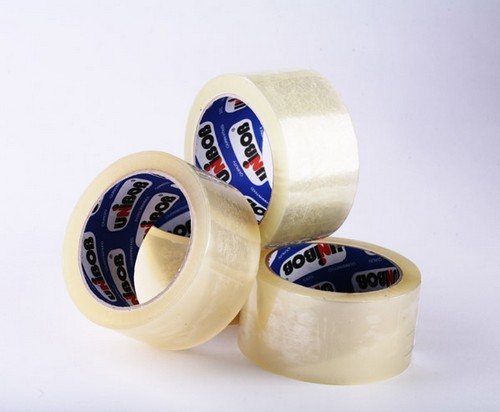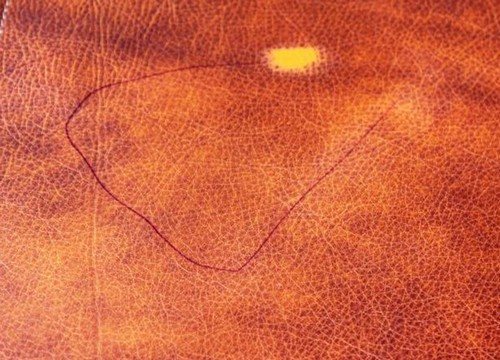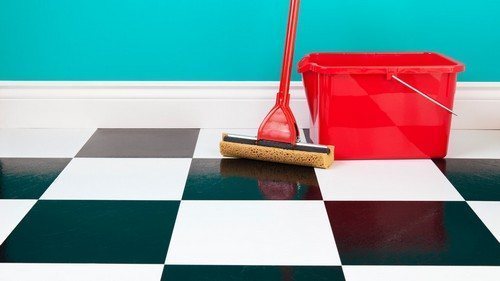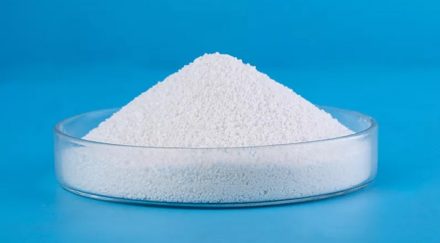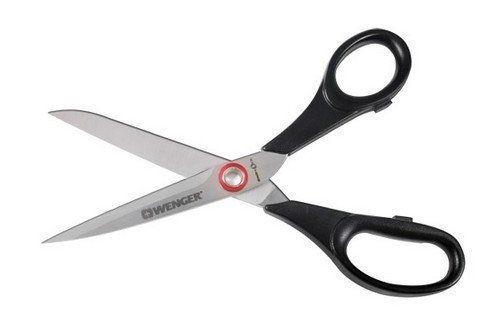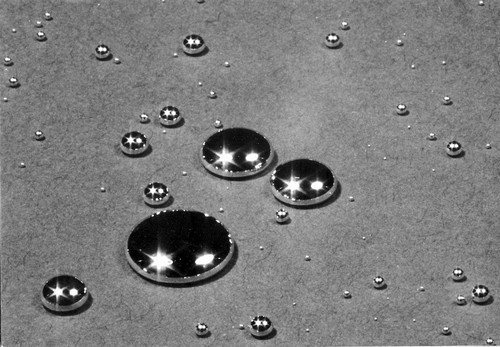Double-sided tape is a tape consisting of a main part (foam or polypropylene) and an acrylic adhesive, which is applied to both sides of the base. In some cases, the base can be foil or metallized, which increases its strength. After using such fastening material, situations arise when it must be removed without damage.
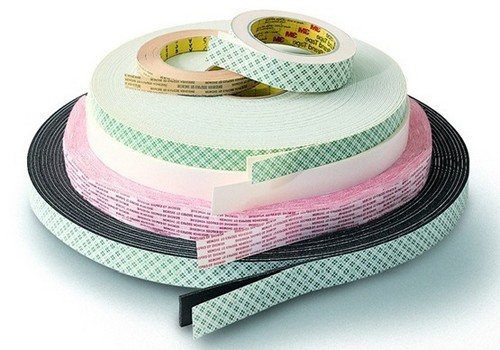
When removing such a fixing material, you need to take into account the fact that this item is attached very tightly, and this makes it very difficult to remove it completely, and impossible without the use of additional means.
The methods associated with removing this type of tape directly depend on the type of plane on which it was fixed.
Removing double-sided tape using heat
Heating works well to separate the bulk of the adhesive, however, it is recommended to use this method only if the surface under the adhesive is heat-resistant. Otherwise, instead of the cleaned area, you may end up with serious damage to the object.
For the heating procedure, a regular hair dryer, which is used for styling hair, is quite suitable. First, heating and subsequent softening of the adhesive mass occurs.After which, the remaining dirt can be easily removed with a cotton cloth; to do this, you need to rub the desired area without force.
Removing traces with vegetable oil
Vegetable oil can easily destroy any remaining adhesive that was not removed with the main part. The method of using vegetable oil depends on the location of the area where the glue remains. If the surface was horizontal, then the oil just needs to be poured onto the required area, but if the material was pasted on a vertical plane, then a napkin previously soaked in oil should be applied to this area. The oil needs time to interact with the adhesive (approximately 15-20 minutes). After time, the remaining glue can be easily removed with a napkin. In order to remove oil stains, the contaminated area should be washed with a soapy solution, then rinsed thoroughly with clean water.
It is recommended to use oily liquid only on objects that do not absorb liquid substances.
Using a stationery eraser
The use of a regular office eraser can quite easily help in removing all existing residues. To do this, you need to carefully rub the residual adhesive layer with an eraser, then simply remove the resulting lumps of adhesive. While rubbing, do not press too hard as this may damage the surface.
Using a drill for cleaning
To remove sticky traces from adhesive tape, you should use a specialized drill attachment, which is made of durable rubber.It is good to use a drill if the contamination is spread over a large area. When using a mechanized device, you do not need to use a lot of your own effort. The device will do everything on its own. You can also use a rubber nozzle to peel off the tape itself, this significantly speeds up the process.
Chemical liquids as a way to destroy glue residues
The best liquids to remove the effects of gluing fixing material are gasoline and paint thinners. The liquid must be applied to a napkin, then the glue stain must be treated. When exposed to chemicals, the glue dissolves and the stain is removed without problems. However, it is important to remember that this method cannot be used to process surfaces that could be seriously damaged when exposed to reagents. Another disadvantage is the strong chemical smell. It will be present in the room for a long time; it is impossible to completely wash it at one time.
Another liquid that can help remove tape marks is nail polish remover. The condition for its use is the complete absence of acetone in the composition.
Paraffin-based lighter fluid can also help remove contaminants, but it only works on certain types of glue.
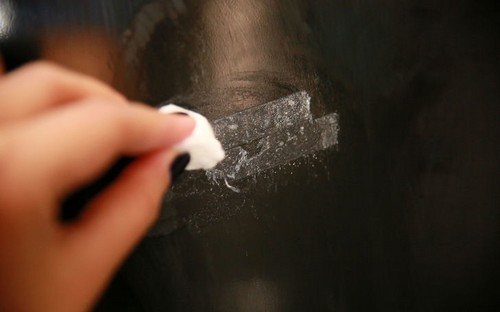
Removing tape using table vinegar
Ordinary table vinegar can easily remove double-sided tape. A good result is achieved due to the fact that vinegar, which is an aggressive agent.When applied to the desired area, it softens both the adhesive layer and the base itself. After treatment with table vinegar has been carried out, the area should be wiped with a dry cloth to completely remove any remaining contaminant. Using vinegar, it is good to carry out the removal process from materials such as glass, tiles, metal, plastic, as well as mirrors and ceramics. And the smell of vinegar, despite its harshness, dissipates quite quickly, since vinegar vapor is a volatile substance.
Destruction of dirt with window cleaning liquid
Factory-made liquids intended for washing glass not only effectively combat residual contaminants, but also remove the specified material itself. The action of such substances is based on the alcohol component and soap they contain.
Removing traces of tape using baking soda
To use baking soda for this purpose, you should first prepare a paste of baking soda and hot water. The resulting mass is carefully applied to the desired area, after which the marks are easily and quickly removed with a sponge. The final stage of cleaning is to rinse off the cleaning composition with clean water. Baking soda is widely used for cleaning on materials such as plastic and tiles. It is important during the cleaning procedure with soda not to rub too hard to avoid minor scratches and other damage.
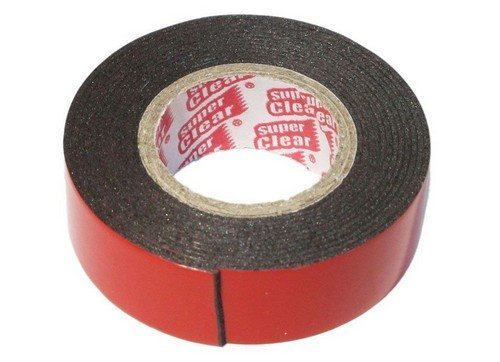
Ethyl or ammonia
It is recommended to apply ethyl alcohol to a cotton-gauze swab or cotton pad. Then you need to scrub the area until all the dirt is gone.An important condition in this case is the timely replacement of dirty swabs with clean ones, since the speed of the cleaning process depends on this. Ethyl alcohol affects the adhesive tape base at the molecular level, destroying its structure.
In addition to ethyl alcohol, you can also use ammonia. It acts similarly to ethyl alcohol. The difference is a sharp, unique smell that dissipates fairly quickly.
According to experts, fresh marks left after removing double-sided tape are easier to remove than old stains. The older the stain, the more it is absorbed into the underlying material, and accordingly, the more difficult it will be to remove it without leaving a residue. In addition, adhering dust and other small particles significantly complicate the cleaning process and restoring the original condition of the affected area. For old marks, heating procedures are well suited if the characteristics of the material on which the tape was fixed allow this.


